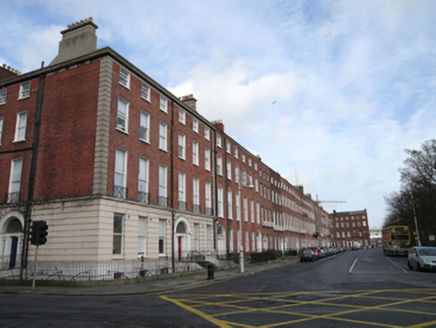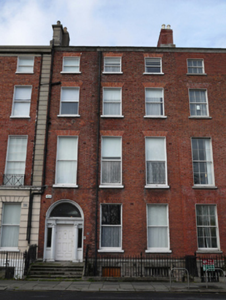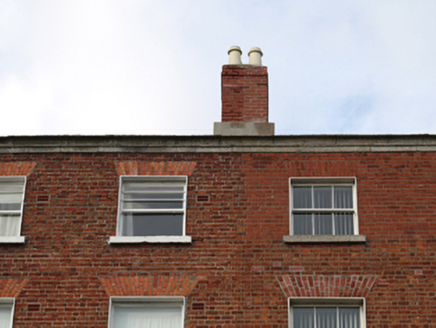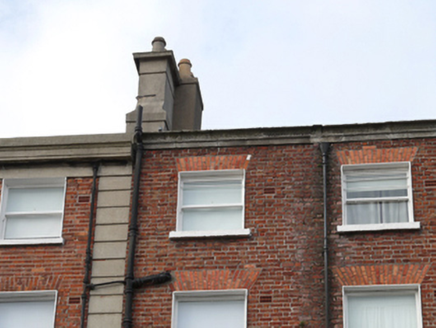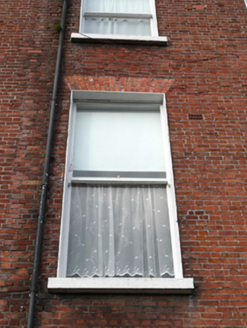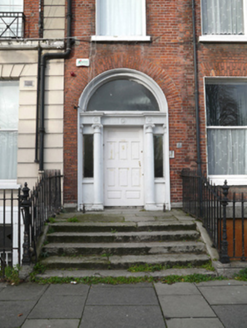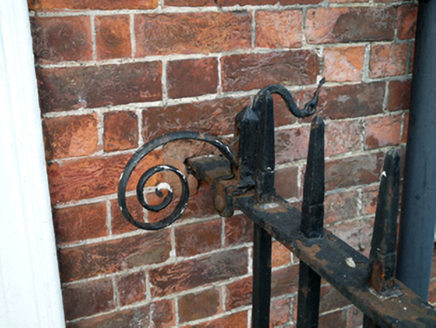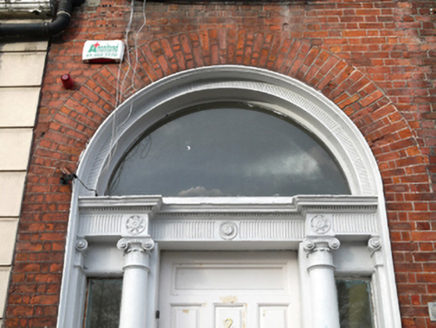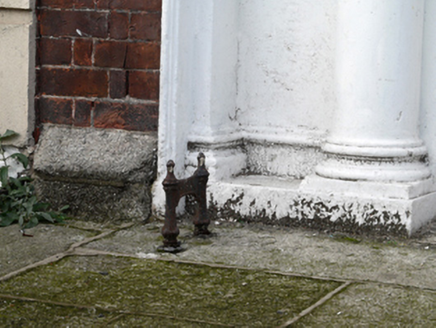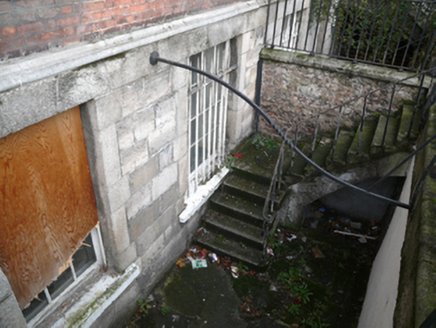Survey Data
Reg No
50010821
Rating
Regional
Categories of Special Interest
Architectural, Artistic
Original Use
House
In Use As
Apartment/flat (converted)
Date
1790 - 1795
Coordinates
315972, 235490
Date Recorded
08/12/2011
Date Updated
--/--/--
Description
Terraced three-bay four-storey house over raised basement, built, c.1792, as one of pair with No. 3 Now in multiple occupancy. Double-pile slate roof, pitched to front with two hipped projections set perpendicular to rear, having red brick chimneystack to east party wall, rendered chimneystack to west party wall with clay pots throughout, hidden behind red brick parapet wall having moulded granite coping. Cast-iron rainwater goods to front (south) elevation. Red brick wall laid in Flemish Bond with flush pointing to moulded granite plinth course over granite ashlar wall to basement level. Gauged brick flat-arch window openings with patent rendered reveals, painted granite sills and replacement timber sliding sash windows, six-over-six pane and eight-over-eight pane to basement with steel grilles, opening to west blocked, and one-over-one pane elsewhere. Rebuilt heads to first, second and third floors. Gauged brick round-arched door opening having rendered reveal and painted stone Ionic doorcase. Original raised-and-fielded timber panelled door flanked by engaged Ionic columns, plain glazed sidelights and quarter engaged responding Ionic pilasters supporting fluted stepped lintel cornice and plain fanlight with fluted surround. Door opens onto granite platform with cast-iron bootscrapers and five granite steps bridging basement. Platform and basement enclosed by original wrought-iron railings and cast-iron corner posts set on granite plinth wall to street with matching iron gate providing basement access. Concrete steps having metal railings to basement.
Appraisal
This house is one in a terrace of eighteen Georgian townhouses on the north side of the square. No. 2 retains much of its original character, including a good doorcase and an elegant granite ashlar cornice to the parapet. Numbers 2 and 3 can be read as a pair with their shared cornice, plinth course and matching door surround details. The basement and entrance areas are enhanced by the retention of stone and metal detailing. This building greatly contributes to this important urban landscape. Mountjoy Square was built on lands formerly belonging to St. Mary’s Abbey and laid out in 1790 by Luke Gardiner II, completed by 1818. Originally called Gardiner Square the plan was to develop a strong vista from Custom House to Mountjoy Square then on to the planned Royal Circus. Unlike other Georgian squares in the city, this example was more carefully laid out with a unified parapet height and the east-west approaches offset to create a sense of enclosure. After falling into serious neglect and dereliction throughout the twentieth-century resulting in the loss of one third of its original buildings, the square has since been repaired.
